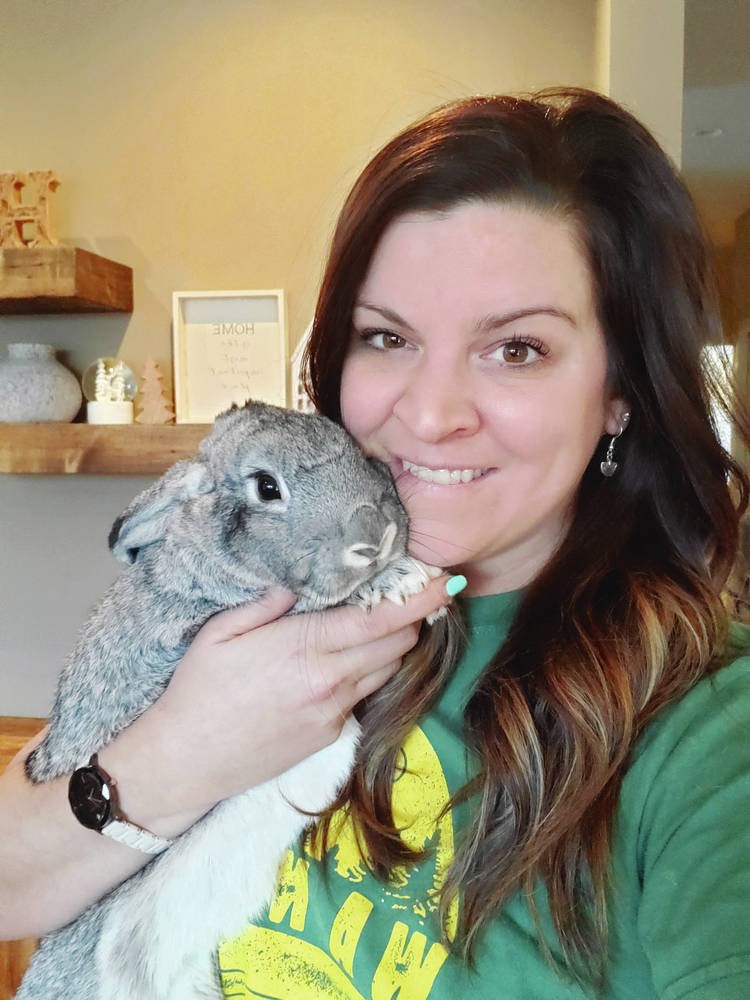As a child, Amy McLaughlin used to scan the classifieds looking for free litters of kittens and puppies, and then put up her own ads to find homes for the animals — but only to those who passed her meticulous interviews.
A couple of decades later, her love of animals hasn’t waned, but it has taken a narrower focus: McLaughlin now runs Amy’s Bunny Barn out of her home in Sooke. Over the past five years, she has rescued more than 400 abandoned or surrendered rabbits.
McLaughlin converted her garage into a rescue space, and a friend down the street has made space for rabbits in her garage, as well. She also has a network of foster homes that take care of some animals until they’re adopted.
In all, McLaughlin has 40 rabbits in her care, 18 of which are living in her garage or her home — including four baby bunnies in her bathtub.
“It’s just chaos, because I have them in the living room, my stepson’s room, my room. I just try to fit them wherever I can,” she said.
McLaughlin is looking to expand her efforts to rehome more rabbits. She and her partner are saving up to buy a new house with enough land to build a rescue centre, complete with an adoption centre, a quarantine space to keep new animals separate and prevent disease from spreading, a shop, and a bunny cafe.
Christie Pulak, a supporter of McLaughlin’s work and a bunny-adopter, has launched a fundraiser to help with the expansion. More than $2,000 has been raised so far.
“I’m wanting to have a bigger facility so I can take in these huge colonies, rehabilitate them and find them homes, but sometimes that could take months to a year to rehabilitate them,” McLaughlin said.
Some bunnies come to her terrified of being touched and some hide for weeks when they first arrive. She works with them every day, in the mornings before working her government day job, during her lunch break and in the evenings, trying to prepare the scared animals for a home.
McLaughlin said many people underestimate bunnies, not recognizing they can have distinct personalities.
“Some of them are shy. Some of them are sassy. Some of them are just really social and outgoing and funny and goofy and affectionate,” she said. “I think people think of them as a rodent. Or something that just multiplies outside, which is true. They can have a litter of bunnies every 30 days.”
That’s one reason why there are so many rabbits in need of rescuing, she said. If an owner has two rabbits and neglects to spay or neuter them, it’s easy to end up with multiple litters pretty quickly.
Bunnies come to her from all over the Island and sometimes the mainland through the SPCA, where she worked for a decade. They came via animal control, surrenders by owners and occasionally someone who has caught a bunny on their property.
Don Brown, chief bylaw officer for the Capital Regional District, said they get frequent complaints about rabbits eating people’s gardens but the region’s animal control doesn’t actually deal with the animals.
They haven’t been a serious problem recently, but in 2016 the CRD worked with a private group to help spay, neuter and relocate a group of rabbits to Texas from View Royal, where there were concerns about them burrowing beneath the Helmcken overpass, Brown said.
In 2010, the University of Victoria culled more than 100 rabbits on campus, before deciding to trap and relocate hundreds more.



